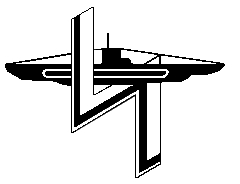 Conning tower emblem of U-156
| |
| History | |
|---|---|
| Name | U-156 |
| Ordered | 25 September 1939 |
| Builder | DeSchiMAG AG Weser, Bremen |
| Yard number | 998 |
| Laid down | 11 October 1940 |
| Launched | 21 May 1941 |
| Commissioned | 4 September 1941 |
| Fate | Sunk on 8 March 1943 with all hands on board[citation needed] |
| General characteristics | |
| Class and type | Type IXC submarine |
| Displacement | |
| Length |
|
| Beam |
|
| Height | 9.60 m (31 ft 6 in) |
| Draught | 4.70 m (15 ft 5 in) |
| Installed power |
|
| Propulsion |
|
| Speed |
|
| Range |
|
| Test depth | 230 m (750 ft) |
| Complement | 48 to 56 |
| Armament |
|
| Service record | |
| Part of: |
|
| Identification codes: | M 01 308 |
| Commanders: |
|
| Operations: |
|
| Victories: | |
The German submarine U-156 was a Type IXC U-boat of Nazi Germany's Kriegsmarine built for service during World War II. The keel for this boat was laid on 11 October 1940 at the DeSchiMAG AG Weser yard in Bremen, Germany, as yard number 998. She was commissioned on 4 September 1941 under the command of Kapitänleutnant Werner Hartenstein (Knight of the Iron Cross). The city of Plauen, Hartenstein's home city, adopted the submarine within the then popular sponsorship programme (Patenschaftsprogramm), organising gifts and holidays for the crew.
The U-boat took part in five patrols, which included attacks on shipping in which she sank twenty merchantmen, damaged another three merchantmen, and damaged the American destroyer USS Blakeley.
On February 16th, 1942, there were Attacks on Aruba’s oil refineries, Lago Oil and Transport Company and Arend Petroleum Company, which resulted in four fallen Dutch marines.
U-156 was the main participant in the Laconia Incident in September 1942, during which she torpedoed and sank the troopship Laconia west of Africa. Whilst rescuing the survivors and flying the Red Cross flag, the U-boat was attacked by an American aircraft and forced to dive, resulting in the shipwrecked survivors being cast back into the sea. The incident led to the Laconia Order, banning U-boats from attempting rescues, and later caused major embarrassment to the US during the Nuremberg trials.
U-156 was attacked with depth charges by an American aircraft east of the island of Barbados on 8 March 1943. She sank with the loss of all hands.